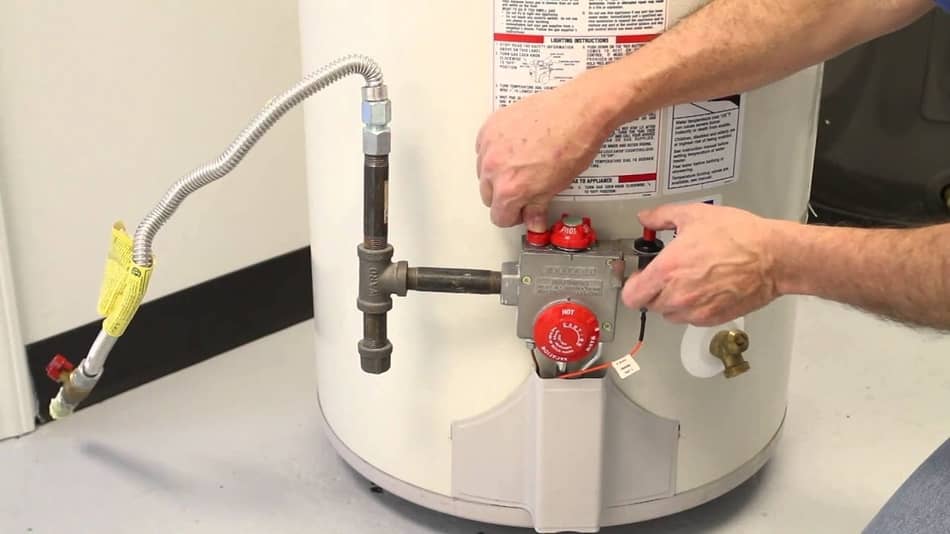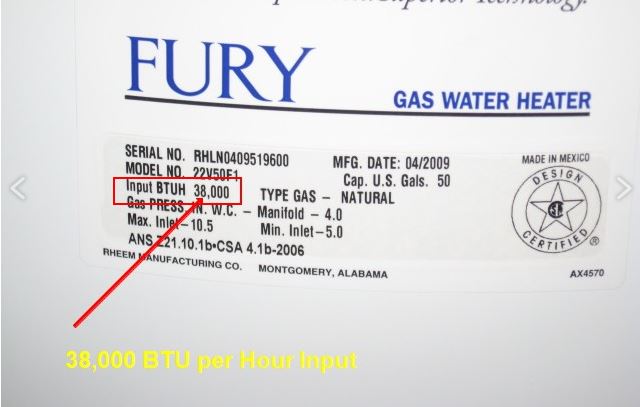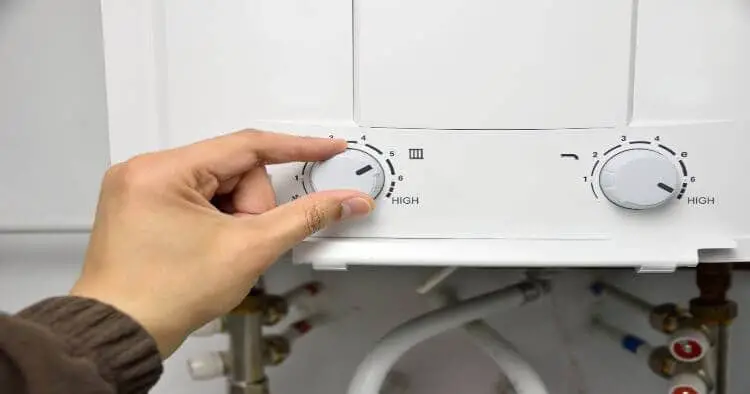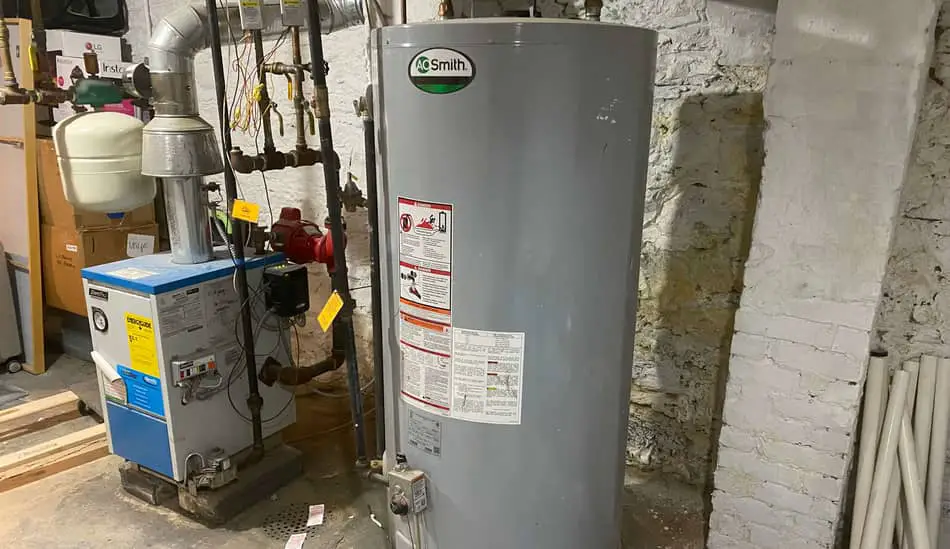Water Heater BTU: Everything You Need To Know

Some people wonder why American residents are still using BTU (British Thermal Unit) as the unit of energy instead of Joules? Those who are not familiar with this topic will not know the right answer. However, there is a very good explanation for why this is so. In this article, we’ll talk about where the BTU comes from and why it is still used in the U.S. So, let’s start!
So What Is Water Heater BTU? A BTU (British Thermal Unit) indicates the amount of heat required to raise one pound of water by one degree Fahrenheit at 1 atmospheric pressure (sea-level). This means the more BTU the water heater has, the more power. It’s a measure that compares the heat energy yielded by other fuel types.
Units like Joules and Watts are much more used in America today compared to BTU. However, people still use BTU to measure water heater energy and HVAC systems. This is mainly because BTU’s definition is conveniently focused on heating water. No matter what is the reasons for BTU’s popularity among Americans, in this article, I will explain everything you need to know about BTU, including the connection to the water heater. So, let’s start with the basics:
Significance
BTU input is used to rank water heater power and is marked by BTUs/hr. For example, a 33,000 BTU heater can heat 33,000 pounds of water in one hour by one degree.
Recovery Rate
The recovery rate is a more frequently used measure when we talk about water heaters. It indicates how many gallons of water can be heated in one hour to 100 Fahrenheit degrees.
Size
Size is used to measure the water heater capacity. Retailer of home improvement Lowe’s says that a water heater of 30 to 40 gallons is enough for a household of two persons and that a water heater of 50 to 80 gallons will cover the needs of five or more people.
Usage
BTU is mostly used in heating, ventilation, and air conditioning systems. Mostly known as HVAC.
For those who are curious, be sure to read Can HVAC Techs Make 100k? Expert Explain.
What Does BTU Rating On Water Heater Means?
The gas water heater BTU rating is usually listed in ‘BTU/hr’ on a label on the heater. When you want to calculate the rating of BTU for a water heater that runs on electricity, you should multiply it by 3.412 to get the ‘total watts’ that can be found on the power rating label.

You may still wonder what does BTU rating on the water heater means? Let’s simplify it and say:
The water heater’s BTU rating indicates how much water (in pounds) can water heater heat by 1°F in 1 hour.
For example, in the image that you can see above, the left panel is from a gas water heater of 40 gallons that is rated at 34,000 BTUs. It means that the water heater in this example will heat water up to 34,000 lbs. in one hour by 1 °F. In other words, this unit will heat up 340 lbs. (that is nearly 41 gallons) of water in one hour at 100 °F.
On the image above of the right panel you can see a power rating of a 50-gallon heater that runs on electricity and has a total watt rating of 2,500 W. It means that the BTU rating for this heater is:
2,500 × 3.142 = 7,855 BTU/hr.
So, this water heater that runs on electricity can heat 14,139 lbs. of water in one hour at 1 °F. That means that this heater will in one-hour heat close to 140 lbs. of water (that is about 17 gallons) by 100 °F.
> Here you can Buy an Electric Water Heater <
How Many BTUs Does Water Heater Use?

The best way to visualize the BTU is to think about it as the amount of energy for heating generated by a 4-inch, single wooden matchstick until it burns out.
Keep in mind that your water heater’s amount of energy varies from month to month. But it is still possible to estimate the home’s monthly and daily BTU requirement for hot water.
How many BTUs a water heater must provide for hot water needed for each usage can be calculated in a way that you first multiply the amount of water in gallons required by the outlet minus inlet °F (desired rise in temperature). Then the product should be multiplied by 8.33 which represents a constant for the conversion of a gallon to a pound.
Let’s take a closer look:
BTUs needed = water quantity in gallons × desired temperature (°F) × 8.33
When you get your numbers referring daily consumption of the water heater, you will easily estimate the total amount of hot water that you use in a week. The handy table below can help you see just how many BTUs are used in your household per week. Keep in mind that water temperature significantly varies across seasons.
| Inlet Water Temp. | 110 °F (Low Outlet Temp) | 120 °F (Medium Outlet Temp) | 140 °F (High Outlet Temp) |
|---|---|---|---|
| 69 °F (21 °C) | 3414 | 4247 | 5913 |
| 59 °F (15 °C) | 4247 | 5080 | 6746 |
| 49 °F (9 °C) | 5081 | 5913 | 7579 |
| 39 °F (4 °C) | 5914 | 6746 | 8412 |
You estimated that your home needs around 200 gallons of hot water each week, which is heated at around 110 Fahrenheits, where the inlet temperature is 59 °F. Looking at the table, we can see that the 10-gallon BTU value is:
20* × 4,248 = 84,960 BTUs per one week
To know how many BTUs you will consume in one month, you should multiply that number by four, and you’ll get – 339,840 BTUs per month.
Note! Number ‘200’ was divided by 10 because the values of BTU in the table stand for every 10 gallons of hot water.
Now that you learned where to find the BTU rating for your water heater and how to calculate your monthly or weekly BTUs, you may wonder how many BTUs are in each unit of one home energy supply. I will explain this now.
How Many BTUs Can You Get Per Unit of Energy?

Every household energy source releases a different number of BTUs. Natural gas has the lowest BTUs for cubic ft. (around 1000), followed by electricity, propane, and gasoline which have close to 100,000 BTUs per unit. Wood yields are at around 20 million BTUs per cord.
Water heaters in most homes use either piped natural gas or electricity, although some use heating oil or propane, while some use wood. In the table below, we draw how many BTUs you are most likely to pull out of every single unit.
| Power Source | Measurement Unit | BTU Per Unit |
|---|---|---|
| Natural Gas | Cubic Foot (cu ft) | 1,031 |
| Electricity | Kilowatt-Hour (kWh) | 3,409 |
| Propane | Gallon (gal) | 91,253 |
| Gasoline | Gallon (gal) | 120,215 |
| Home Heating Oil | Gallon (gal) | 138,400 |
| Wood | Cord | 20,000,000 |
Suppose your water heater goes on electricity or natural gas. In that case, you might conclude that you are definitely spending too much energy on getting the hot water, given the obvious relatively low BTU yields from these energy sources. Many people don’t know that natural gas is one of the cheapest sources of energy in America.
Natural gas that is used in American homes sumps up in hundreds (CCF) or thousands of cubic ft. (MCF). One therm (marked as 1 thm) of natural gas is equal to 1.037 CCF, which is itself equal to 100,000 BTU.
Over the last few years, the price of 1 CCF on average has been under $1. So, even when you use close to 1 million BTUs for water heating every month, your gas bill expense for hot water is most likely to be under $10!
If you have a water heater that runs on electricity, you should keep in mind that it takes far fewer BTUs to heat up the water by electricity than with a gas heater – even close to 40% less! The reason for this is simple: gas heaters traditionally lose more heat on ‘standby heat loss’ compare to electric models.
This you can clearly see in the higher efficiency rating. Or, on the other hand, in electric Energy Factor (EF) ratings compared to water heaters on gas; electric models have average ratings of 0.9, while gas models have an average of only 0.6. We have now explained to you everything you need to know about BTUs for water heaters.
If you want to know more, be sure to watch this video then.
Recovery Rate Of Water Heater
The water heater is usually ranked by its BTU input in one way or another. What does that mean? It means water heaters are ranked by the level of their BTU per hour. So, if your water heater has a 36,000 BTU, it means it can heat up to 36,000 lbs of water by one degree per hour.
The recovery rate is how quickly it takes for the water in the tank to heat up again. When you are using a water tank, the hot water is going out, and the cold water is filling up. The recovery rate basically means how long it takes for water to re-heat.
The recovery rate can be calculated using the number of gallons that can heat up to 100 degrees F in one hour. The standard recovery rate for a 40-gallon water heater tank is approx. 40 minutes.
Water Heater Size
For calculating the size of the water heater in our homes, people usually reffer to it in gallons. The standard for a household of two persons is a 30 to 40 gallons tank. The water heater of 50 to 80 gallons will cover the needs of five or more people under the same roof.
Usually, when we talk about BTUs we are referring to, most often, heating, ventilation, and AC systems communities to be able to discuss the rating effect of the equipment.
FAQ: People Also Ask
How many BTUs do I need for my water heater?
Input usually ranges from 32,000 for a unit of 30 gallons to 88,000 for a unit of 100 gallons tank. Standard input is 34,000 BTUs for a tank of 40 gallons and 36,000 BTUs for a tank of 50 gallons.
Is 40000 BTU good for a water heater?
A water heater of 50 gallons that can be found at Home Depot, with an input of 40,000 Btu/hr., is considered to have a quick recovery. Standard recovery is considered to be 36,000 Btu/hr.
Final Thoughts
Now that you are familiar with the BTU unit of measurement and water heaters, it will be much easier to make a decision when buying a new device. In this article, we have explained the important differences that you need to pay attention to and what is important to consider. I hope we have helped you with this issue.
